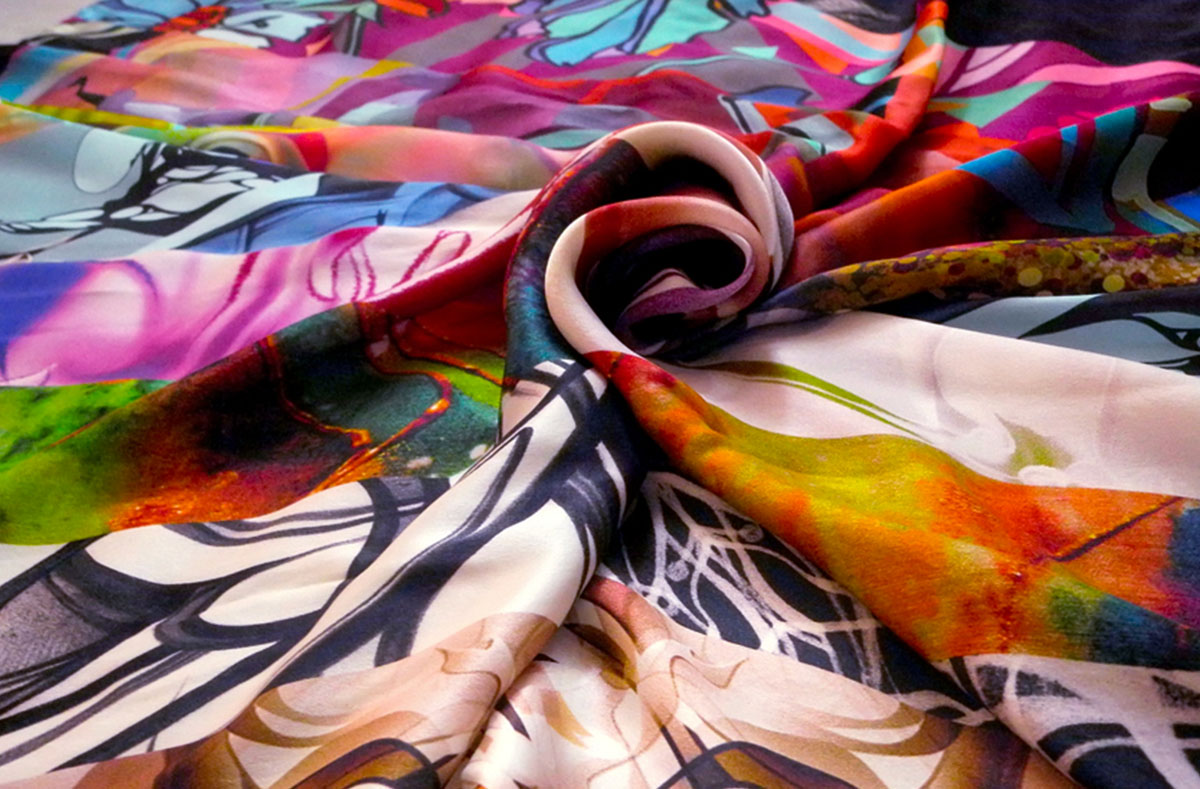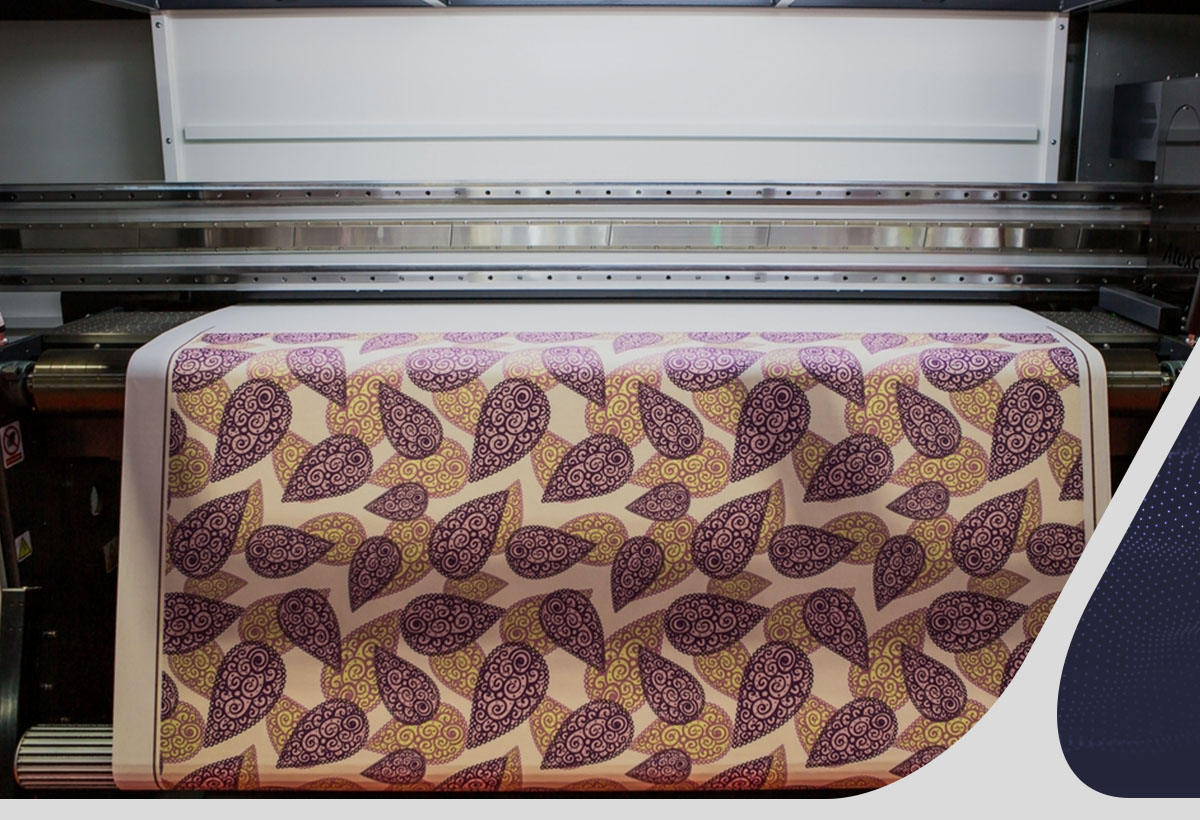There are some differences between digital and conventional printing. They are related to the impacts on the productivity, profitability and socio-environmental responsibility of the textile industries.
The important thing is to know these characteristics to understand which of the two techniques is the most advantageous for your business. Therefore, below, we compare both with the aim of collaborating with this selection. Continue reading to check it out!
Remember what printing is!
Before we address the main differences between digital and conventional printing, it is worth highlighting what printing is. This is a creative process that transfers the chosen design to the piece.
In the textile industry, she is responsible for making the prints for clothes and fabrics.
According to an article, the term “Textile Printing” refers to an artisanal or industrial production system. It is used to reference different techniques that repeatedly transfer colorful designs or effects to the fabric.
In fact, this is such an old technique that we don’t even know exactly when it began. According to the article, it is possible that the art of textile printing originated in China or India, through the “Block Printing” system.
In any case, this practice is at the finishing stage of the entire textile production chain. And over the years, the techniques involved have undergone transformations. The aim here is to ensure the evolution and construction of increasingly competitive and high-quality products.
This practice can be manual or digital, with the second option being the most modern and technological. However, among the types of printing we can also mention some of the best known, such as sublimation and screen printing.
In addition to these, it is possible to mention:
- Transfer;
- Laser;
- Rotary printing, and more.
Digital and conventional printing: current scenario

With advances, doubts arise in the textile industry regarding digital printing and conventional printing. After all, the first is the direct result of technological transformation, as we saw above.
However, before making a comparison between the two techniques, it is necessary to reinforce the overview of the printing market. Thus, the characteristics will be based on the current context.
We can mention the most recent data highlighted by the SIGN FutureTEXTIL Serigraphy Forum, presented by the Future Print Fair portal. The sector has more than 429 thousand businesses that print, engrave and decorate. As well as more than 30 thousand printing companies and more than 16 thousand printing companies.
Furthermore, there are already more than 39 thousand digital printers in operation in Brazil. According to the research “The Future of Digital Textile Printing for 2023”, cited by the portal Terra, the volume of printed fabrics reached 1.16 billion m².
Consequently, it increased from 548 million m², from 2013 to 2018. The expectation is that this number will have been surpassed once again in 2023, reaching 2,7 billion m².
It is no coincidence that the global textile digital printing market generated US$1.88 billion (around R$10.36 billion) in 2018. The estimate is that the figure will reach US$3.75 billion (R$20.67 billion) in 2023.
Smithers Pira Research, mentioned in another article on the Future Print Fair portal, predicts an increase in the global digital printing market. The possibility is that it will reach 4.9 billion euros (4.22 billion pounds) from 2020 to 2023, reaching a growth of 11.6% per year.
This brief overview reinforces the growth of digitalization and points to this technique as a major trend in the textile industry for the coming years.
Main characteristics of digital printing and conventional printing
With the data pointed out above, we can address the main differences between digital printing and conventional printing. Highlighting, therefore, the great characteristics of both techniques.
Conventional stamping can be carried out using screens or cylinders. The combination of the two forms generated rotary printing, revolutionizing industrial printing.
The cylinders here are microperforated and engraved with already determined images, facilitating the process in large quantities. Therefore, for small batches, the technique is expensive.
However, there is also a limitation on printing colors, requiring a large amount of footage when developing personalized designs.
Conventional (localized or frontal) uses large amounts of chemicals, water and energy. In addition, it has different screens for each color of the final design. In the same way, it has a folder responsible for covering the fabric while the process takes place.
Digital printing uses textile technology to perform direct printing. Just like a paper printer, the pattern is applied directly to the surface of the part. This makes it possible to develop different tones and shapes, with high resolution.
Digital prints are made on different printer models. In this way, some steps or resourceswhen not eliminated, are considerably reduced. Amongst them:
- Pigmentation laboratory;
- Water consumption;
- Intermediate stocks of finished products.
Also according to data cited by the Terra portal, this technique reduces the emission of polluting gases and the consumption of resources.
To add, the carbon footprint of a conventional rotary printing system is 139.56 kg CO2eq . In contrast, the digital system uses 85.66 kg of CO2eq. Which results in a savings of almost 40%.
Advantages and disadvantages of digital and conventional printing
To complement the previous topic, we highlight that there is a big difference between digital and conventional printing. Especially when it comes to the use of natural resources.
Rotary stamping consumes, on average, 80 to 200 liters of water per kilogram of fabric. Digital only uses 2 liters, according to Terra. This results in savings of around 97,5%.
However, it is worth noting that, in digital printing, in some cases, industrial washing of fabrics is still used.
Furthermore, waste generated by conventional methods can contaminate natural resources more easily. Unlike digital printing, which has water-based inks and no heavy chemical components, making disposal easier.
The greater energy efficiency, productivity and agility of digital printing promote better performance in the production process in the textile industry. Furthermore, they collaborate to more sustainable and healthy production due to the reduction of water and energy consumption.
Finally, digital does not require the manufacture of matrices or cylinders. This contributes to small-scale production and promotes greater customization.
Despite the possibility of high production, conventional production does not guarantee a competitive price when there are few parts. But it is worth noting that this technique makes it possible to create special effects, such as sparkles, even if some designs do not achieve fidelity.
Given the characteristics presented, it is necessary to keep in mind the production of your prints and your production objectives. Only then will it be possible to understand which of the two techniques is the most advantageous for your industry.
Read also: How to have a sustainable brand in the textile industry?
How to start using digital printing in your textile industry?

If you opt for the digital printing trend, you must, of course, invest in the acquisition of technological and intelligent solutions. After all, the basis of the technique concerns the digitalization of the process with the aim of improving production.
Investing in quality solutions promotes low-cost, data-driven production. And Delta Máquinas Têxteis equipment collaborates with the continuous process without affecting expenses or the excellence of the final product.
To implement this technique, Delta developed the following machines:
- Sublimation Calender CTM450: performs the work on rolls or cut pieces, standardizing and automating the process. It guarantees productivity, quality and profitability for industrial heat transfer processes;
- Digital Print Preparator PID100: ideal for carrying out roll-to-roll treatment more quickly, facilitating the application of the primer. In addition to promoting vivid colors, high resolution and solidity, it can be used in the preparation of different compounds;
- Open Mesh Preparator PMA500: allows inspection and preparation of mesh or fabric. It provides, in advance, width and length data for 100% of the revised material. Thus eliminating one of the main losses in the sublimation segment: leftover printed paper and dye consumption;
- Paper Punching Machine PAP500: promotes large-scale production with profitability. The solution reuses sublimation paper, discarded in digital printing, to perform the spreading. Therefore, it guarantees even more sustainable production;
- Digital printer dryer SDR100: It is an accessory for digital printers of various formats. It is responsible for increasing productivity and quality of printed materials.
Read also: Discover the advantages of the sublimation calender
Want to know more about how Delta can help you implement digital printing in your textile industry? Then click the button below to speak to one of our consultants now.




